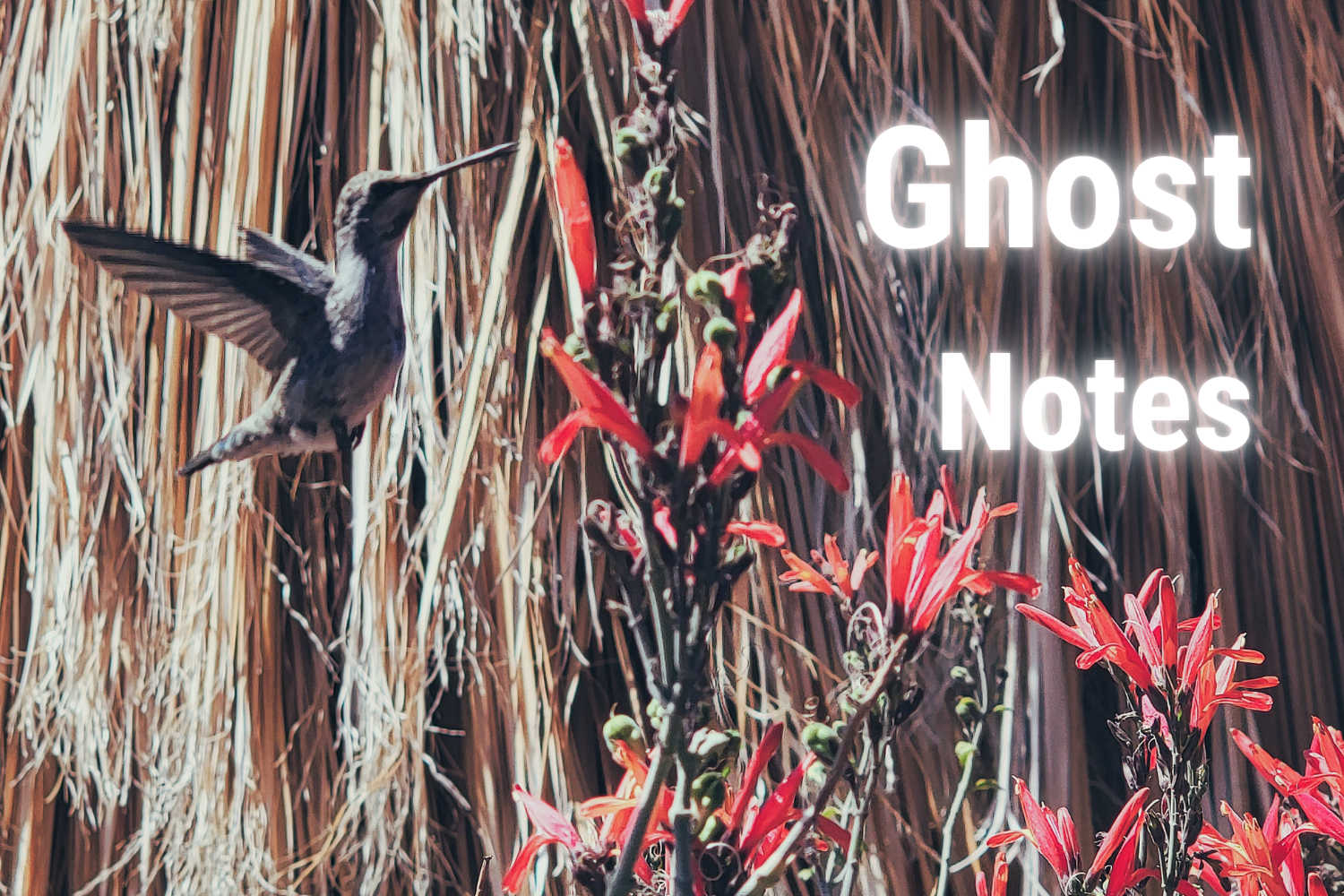Ghost Notes
Imperfection, intuition, and the sounds that stick.
The Song That Started It
On my first album, Above the Clouds, there’s a song called Breeding Ground. Everything in it — guitars, vocals, even the lyrics — was recorded in a single, improvised take. No plan, no structure, no second attempt. I played two minutes of shaker and then blacked out until the end. At one point, I was creaking an old drum throne that happened to hover around G♭, the flatted fifth in C minor, the song’s eventual key. The vocal melody pulls on this tension throughout.
When it was done, a friend told me it sounded like a “fucked up version of Radiohead.” It’s still one of the best compliments I’ve ever received.
That song taught me something I’ve spent years trying not to forget: when I trust my instincts, something real surfaces. Not always relatable, but alive.
The Art of Leaving Things Alone
As I’ve grown as a songwriter and producer, I’ve become better at shaping sound but worse at letting things breathe. Moving to Nashville made me sharper technically, but also more self-conscious about imperfection. It’s so easy in modern production to pocket and tune everything, to edit out the flubs until the human moments disappear.
Imperfection is what gives a performance its pulse. The slightly late snare hit. The note that scrapes just enough. The sigh you didn’t mean to record. These are the ghost notes — the smudges that remind you someone was here.
I used to take pride in leaving those moments alone. I still try to. I’m a work in progress.
Listening to the Beautifully Broken
I’ve always been drawn to artists who understand that perfection is sterile. Yankee Hotel Foxtrot and A Ghost Is Born taught me that clarity and chaos can coexist. Radiohead’s Kid A turned alienation into atmosphere. Tom Waits’ Rain Dogs showed that character can live in the cracks of a voice, not just the notes. The White Album reminded me that contradiction can be art, and that happiness can be a warm gun.
In every case, the beauty is inseparable from the flaws. The music sounds alive because it never hides the hand that made it.
I’ve learned the same from writers and painters. Henry Miller wrote like he was bleeding truth through a grin. William H. Gass could shape a sentence into architecture. James Tate found humor in heartbreak. Bosch painted fever dreams disguised as morality. Rothko built entire worlds out of stillness. Wes Anderson and the Coen Brothers turn absurdity into poetry.
They all share one thing: the willingness to leave edges unpolished.
The Ghosts We Carry
Ghost notes aren’t just sounds. They’re the smudges on the soul that never quite fade — proof that life made contact. Every artist carries them, and every piece of work bears their residue.
Art latches because it’s made from what refuses to leave. Those traces, those imperfections, are where meaning lives. Maybe that’s how God feels about us: proud enough of what he made, but already distracted by his next fixation.
Noise, Static, and Surrender
For better or worse, I rarely begin with a concept. I let ideas rise through the static of my mind and follow where they lead. Sometimes they come out messy and electric; other times they fall apart.
When you intervene too early, you can craft something lovely, but it risks becoming a commodity — too self-conscious to stay raw. It’s like comparing a perfectly executed building to the grandeur of Yosemite. One is designed to impress. The other simply exists.
Listening deeply can be both inspiring and crushing. It shows you paths you hadn’t seen, but it also reveals how far you still have to go. That tension — between confidence and collapse — is what it means to make art. Being brash enough to believe what you make matters, and fragile enough to know it might not.
Closing Reflection
Ghost notes are what remain when the song fades. They’re the evidence of a human hand, the sound of a feeling still trying to resolve.
Maybe the point isn’t to play them perfectly, but to listen long enough to know they’re there.
